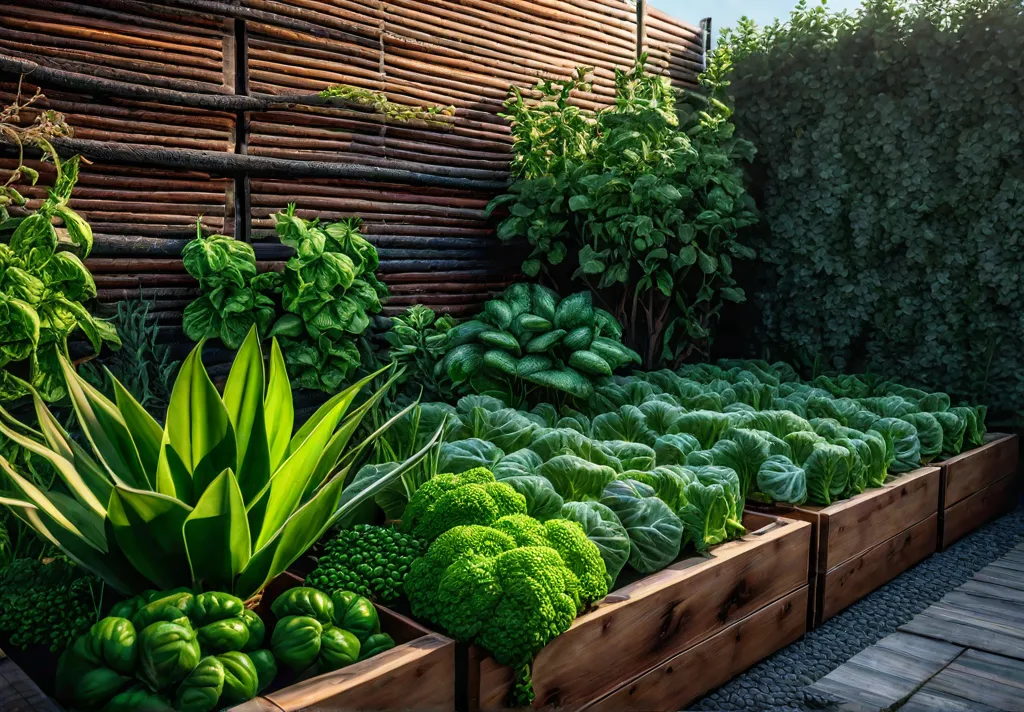Have you ever dreamed of growing fresh, juicy tomatoes or crisp, colorful peppers in your backyard? Vegetable gardening is a rewarding hobby that allows you to enjoy the satisfaction of homegrown produce and connect with nature. As a home decorator and design blogger in Portland, I know firsthand how vegetable gardening can add beauty, functionality, and a sense of accomplishment to any living space.
Whether you have a sprawling yard or a small patio, planning is key to creating a successful vegetable garden, especially for beginners. In this article, I’ll walk you through the eight essential steps to plan and cultivate the perfect vegetable garden tailored to your unique space and lifestyle. From assessing your sunlight and soil to choosing the right plants and maintaining your garden, I’ll provide practical tips and insights to help you start your gardening journey.
Step 1: Assessing Your Space and Sunlight
The first step in planning a successful vegetable garden is to evaluate your available space and the sunlight it receives. This will determine the type of garden you can create and the vegetables you can grow.
Identifying Sunlight Needs
Different vegetables have varying sunlight requirements. Leafy crops like lettuce and spinach need at least 3-4 hours of direct sunlight daily, while root vegetables like carrots and beets require 5-6 hours. Fruiting crops like tomatoes and peppers need the most sunlight, at 7-8 hours daily. If your garden lacks sufficient sunlight, consider alternative options like container gardening or raised beds.
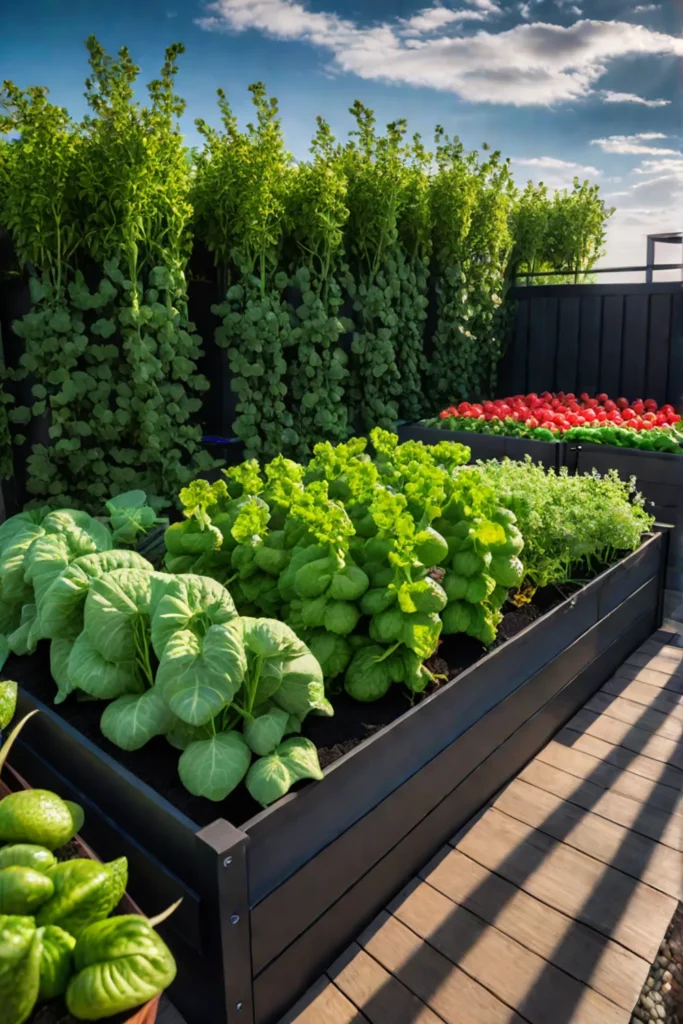
Types of Gardens and Their Space Requirements
Depending on your available space, you can choose from several garden styles:
Container Gardening: Perfect for small spaces, container gardening allows you to grow vegetables in pots, planters, or even repurposed items like old buckets or barrels.
Raised Bed Gardening: Raised beds are ideal for improving drainage and preventing competition from nearby trees and shrubs. They’re a great option for gardeners with heavy clay soils or poor drainage.
In-Ground Gardening: If you have a larger yard, in-ground gardening provides the most growing space, but it requires careful consideration of the garden’s location to ensure it receives at least 6 hours of direct sunlight daily.
By understanding your space and sunlight conditions, you can select the right garden style and choose vegetables that will thrive in your unique environment.
Step 2: Choosing the Right Location
The location of your vegetable garden is crucial for its success. Consider the following factors when selecting the perfect spot:

Sunlight and Sun Exposure
As mentioned earlier, most vegetables require at least 6 hours of direct sunlight daily, with 8-10 hours optimal. Choose a sunny location that offers the best sun exposure for your plants.
Watering and Water Sources
Locate your garden near a clean water source, such as a hose or outdoor faucet, to make watering more convenient. Avoid recaptured water from rain barrels, as they may harbor pathogens that can harm your plants.
Garden Soil Quality
Healthy, well-drained soil is essential for vegetable gardens. Clear areas near hard surfaces or structures that could lead to soil contamination, such as sidewalks treated with ice-melting agents or areas exposed to road runoff.
Proximity to Residence
Placing your garden close to your home encourages more frequent care, leading to better weed control and increased harvests. The convenience of proximity also ensures that your plants are watered and tended to regularly.
Wildlife and Pet Exclusion
Use appropriate fencing to protect your garden from wildlife and pets. Deer require fences at least 6-8 feet tall, while smaller animals like rabbits can be kept out with 3-foot chicken wire fences.
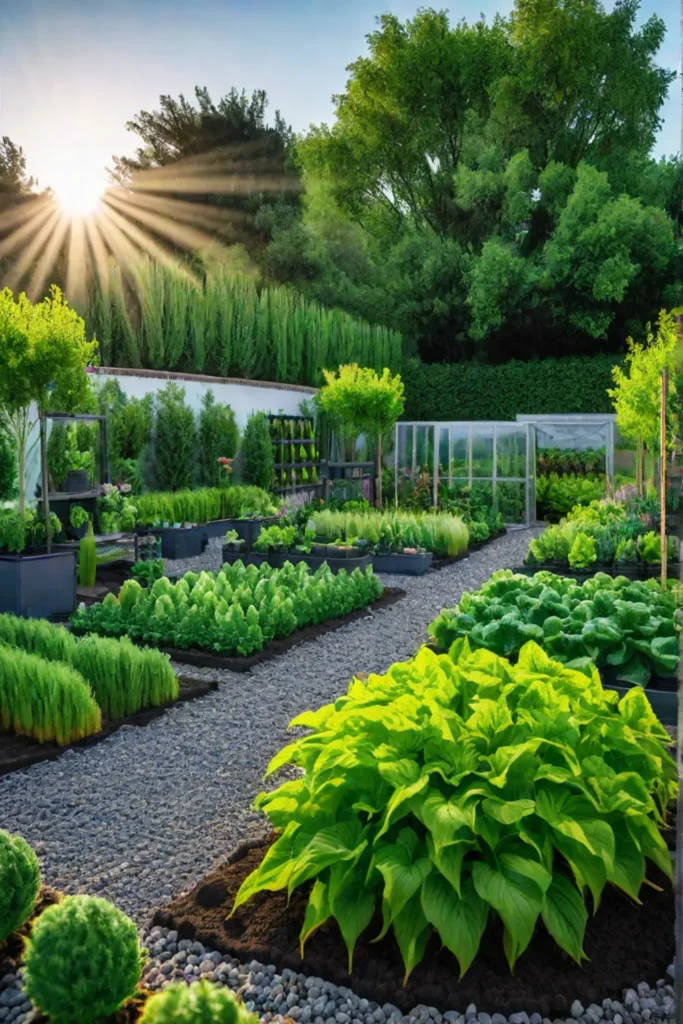
If your space doesn’t offer ideal conditions, don’t worry! You can still create a thriving vegetable garden by choosing shade-tolerant vegetables or using creative solutions like vertical and container gardening to maximize your limited space.
Step 3: Soil Testing and Amendment
Healthy soil is the foundation of a successful vegetable garden. Before you start planting, it is crucial to test your soil and make any necessary amendments.
Importance of Soil Testing
pH Levels
Soil pH is a critical factor affecting nutrient availability for your plants. Most vegetables thrive best when the soil pH is between 5. If your soil is too acidic (below 0) or alkaline (above 0), you must make adjustments to ensure your plants can access the nutrients they need.
Nutrient Content
Soil testing also helps identify the current nutrient levels in your garden. By understanding the nutrient composition of your soil, you can tailor your amendment strategy to provide the right balance of nutrients for optimal plant growth.

Methods for Amending Soil
Improving Clay Soils
If your soil is heavy with clay, you can improve its structure and drainage by adding organic matter, such as compost, peat moss, or leaf mold. Gypsum can also break down clay particles and enhance overall soil quality.
Improving Sandy Soils
Sandy soils tend to lack nutrients and moisture-retaining capacity. Incorporate organic matter, like compost or aged manure, to help hold onto water and provide essential nutrients. Using mulch can also prevent evaporation and maintain soil moisture. Applying a slow-release fertilizer can help sandy soils retain nutrients more effectively.
Tips for Enhancing Soil Quality
- Test your soil every 3-5 years to monitor nutrient levels and adjust as needed.
- Conduct soil testing in the fall, allowing amendments to decompose before planting season.
- When taking soil samples, ensure you’re collecting from the top 6-8 inches of the soil.
- Choose native plants for your landscaping to reduce the need for additional fertilizers.
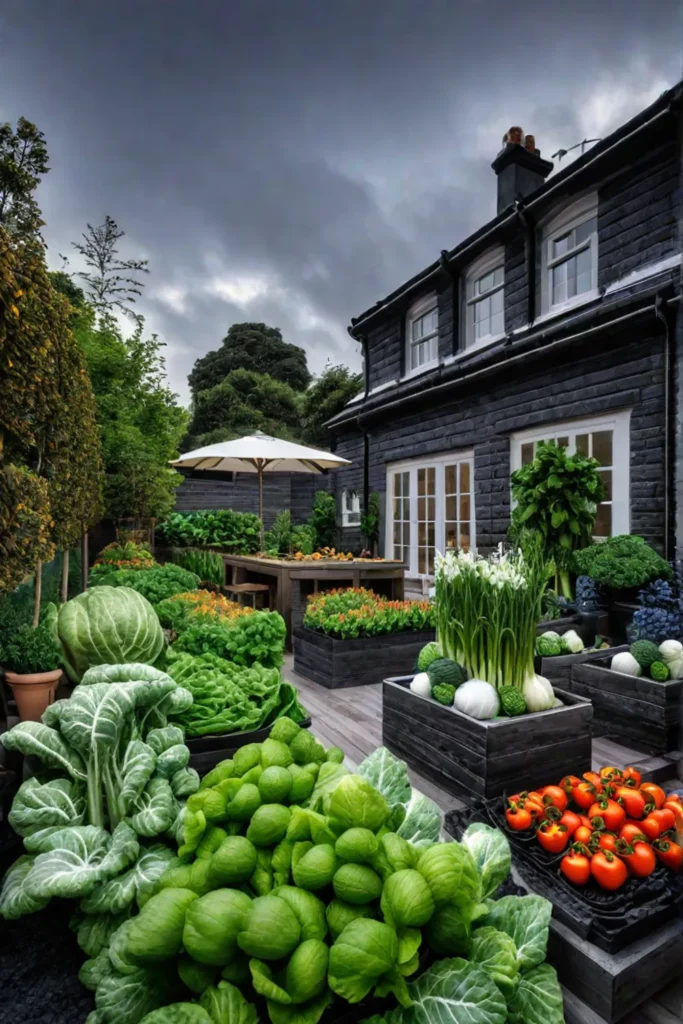
Understanding your soil’s characteristics and making the necessary amendments will create a thriving foundation for your vegetable garden.
Step 4: Selecting Vegetables and Planning Layout
Now that you’ve assessed your space, prepared the soil, and have a good understanding of your growing conditions, it’s time to choose the vegetables you’ll plant and plan the layout of your garden.
Factors to Consider When Choosing Vegetables
Growing Season
Select vegetables that align with your region’s growing season. Planting crops outside their ideal season can lead to poor growth and lower yields. Consult local resources, like farmers’ markets or agricultural extension services, to learn about the best planting times for your area.
Space Requirements
Consider the amount of space each vegetable requires. Some plants, like bush beans and carrots, need less room than vining crops like cucumbers and melons. Proper spacing ensures optimal growth and prevents overcrowding.
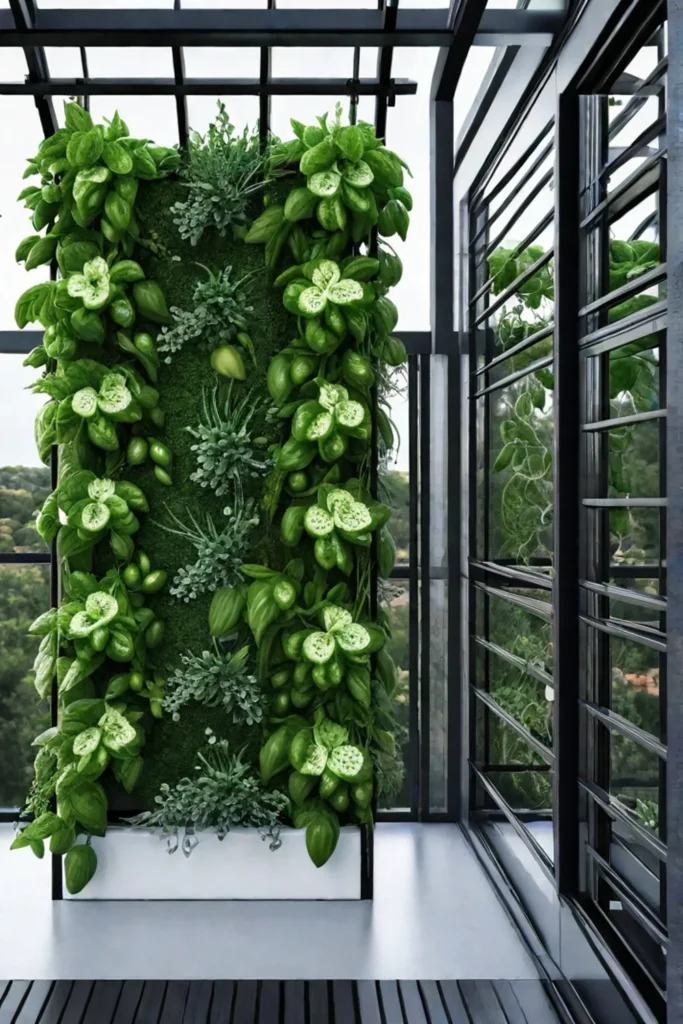
Companion Planting
Companion planting involves growing different crops together that benefit each other. For example, planting marigolds near tomatoes can help repel nematodes and insects.
Beginner-Friendly Vegetable Choices
Here are some excellent vegetable options for beginner gardeners:
- Herbs: Basil, parsley, rosemary, and thyme are easy to grow and can be planted indoors or outdoors.
- Cucumbers: Ideal for container gardens, cucumbers are fast-growing and require minimal care.
- Peppers: Both sweet and hot varieties are suitable for beginners. Peppers are relatively low-maintenance and can be harvested throughout the season.
- Tomatoes: A staple in many gardens, tomatoes come in various sizes and flavors. They require some additional care but are generally easy to grow.
Planning the Garden Layout
When planning the layout of your vegetable garden, consider the following factors:
Sunlight Requirements
Arrange your garden so that sun-loving plants are in the sunniest areas and shade-tolerant crops are in the more shaded spots.
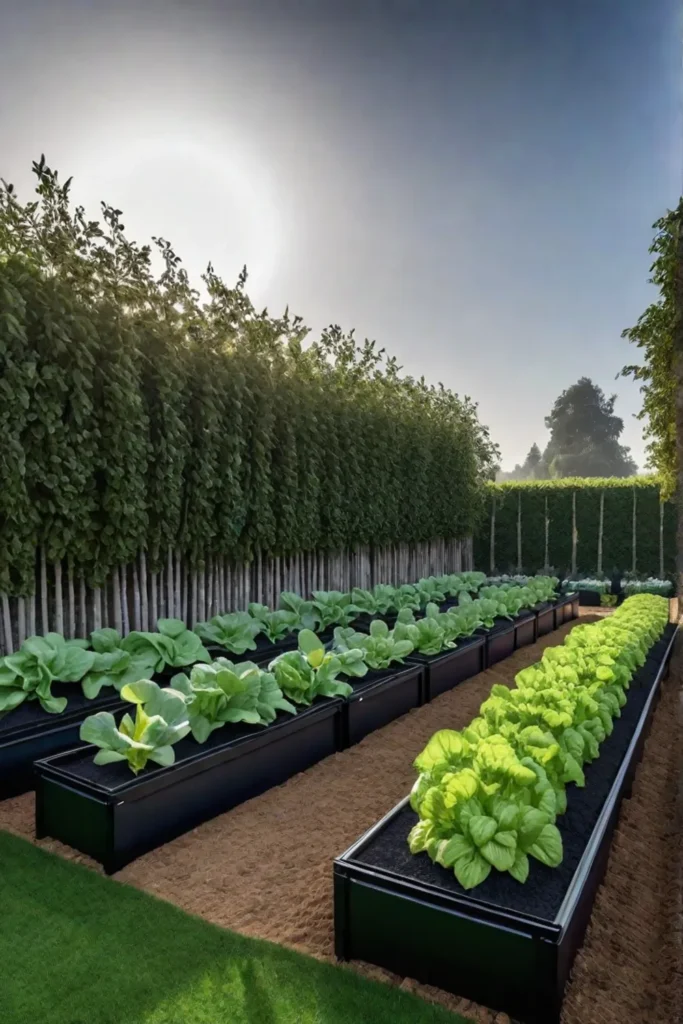
Space Efficiency
To maximize your growing space, group vegetables with similar growth habits together. For instance, tall crops like corn and shorter ones like beans can be planted to create vertical layers.
Companion Planting Layout
When incorporating companion planting, ensure the beneficial plants are placed near their companions. For example, position marigolds close to your tomato plants to help repel pests.
By carefully selecting your vegetables and planning an efficient layout, you’ll set your garden up for success and enjoy a bountiful harvest.
Step 5: Creating a Planting Schedule
Careful planning of your planting schedule can help you extend the growing season and ensure a continuous supply of fresh produce.
Understanding Succession Planting
Succession planting involves sowing multiple crops of the same type sequentially in the same location during the growing season. This technique allows you to enjoy a steady harvest over an extended period, even in areas with short growing seasons.
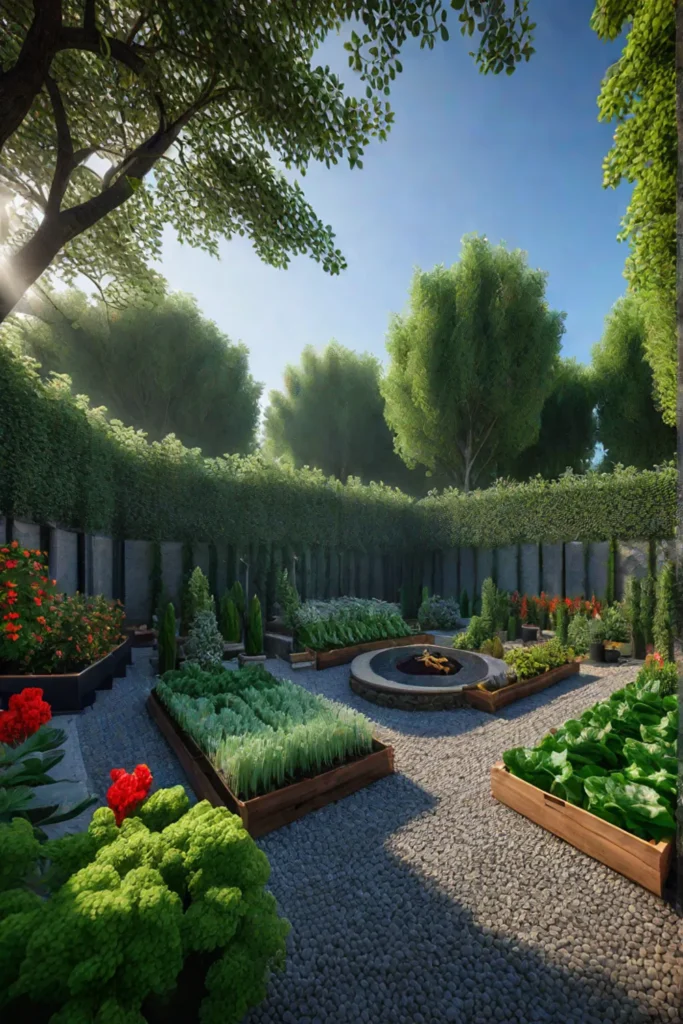
Strategies for Extending the Growing Season
Cold Frames
Cold frames are small, enclosed structures with glass or plastic covers that protect plants from harsh weather conditions. They enable you to start planting earlier in the spring and extend the growing season into late fall.
Row Covers
Row covers are lightweight fabrics that can be placed over your plants to shield them from frost and other environmental factors. They help maintain soil temperature and moisture levels, allowing for earlier planting and later harvesting.
Resources for Local Frost Dates and Planting Guidelines
To determine the best planting times for your area, consult resources like your county extension office or local Master Gardeners group. These organizations can provide valuable information on the optimal planting schedules for your region’s climate and growing conditions.
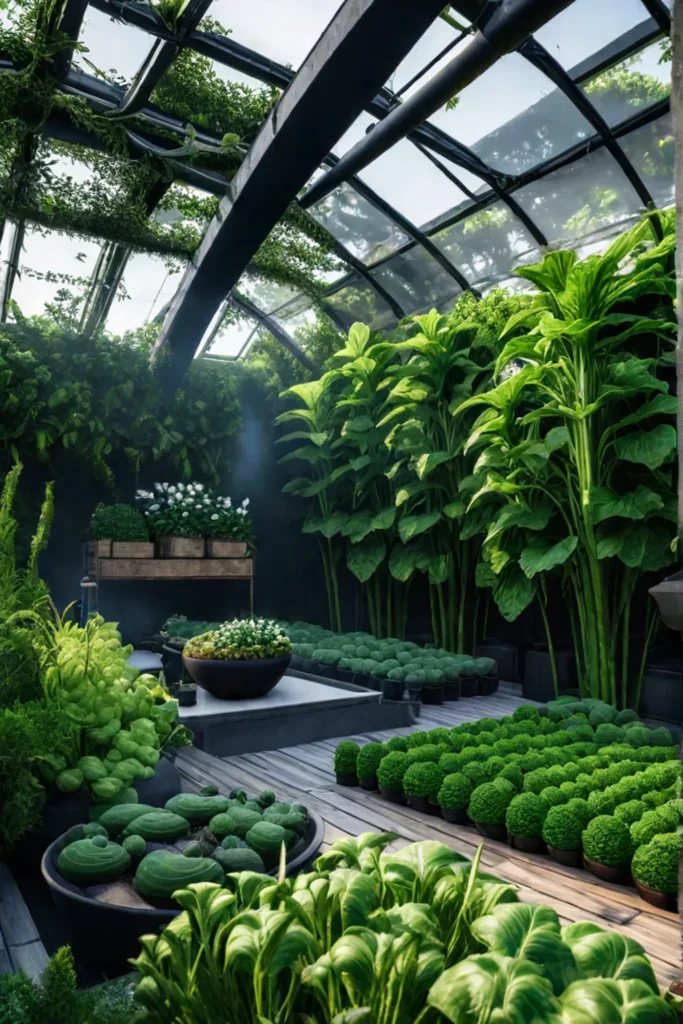
By incorporating succession planting and utilizing season-extending techniques, you can maximize the productivity of your vegetable garden and enjoy a bountiful harvest throughout the growing season.
Step 6: Watering and Irrigation
Proper watering is essential for the health and growth of your vegetable garden. Consider the following watering methods and strategies to ensure your plants receive the right moisture.
Different Watering Methods
Hand Watering
Hand watering with a hose or watering can allow you to target specific areas and control the amount of water each plant receives. However, this method can be time-consuming, especially for larger gardens.
Soaker Hoses
Soaker hoses slowly release water along their length, effectively distributing moisture to your plants without excessive runoff or evaporation. Water-efficient, but you must position them carefully to ensure even coverage.
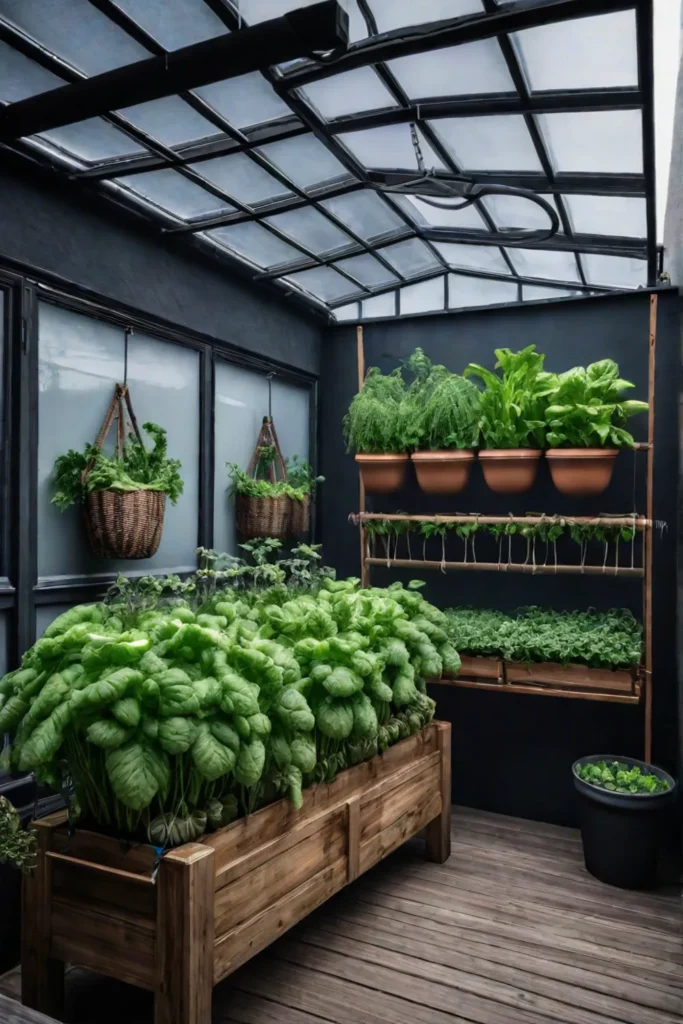
Drip Irrigation
Drip irrigation systems deliver water directly to the base of your plants through small emitters or drippers. This highly efficient method minimizes water waste and can be particularly helpful for larger gardens. However, setting up a drip irrigation system may require more initial effort and investment.
Conserving Water and Preventing Overwatering
To conserve water and avoid overwatering, consider the following tips:
- Choose water-efficient irrigation technologies, such as WaterSense-labeled controllers, to automatically adjust your watering schedule based on local weather or soil moisture data.
- Water your garden early or late in the evening when temperatures are lower, reducing evaporation.
- Regularly inspect your irrigation system for leaks, broken components, or clogged emitters that could lead to water waste.
- Ensure proper drainage in your garden to prevent waterlogging, which can cause root rot and other plant diseases.
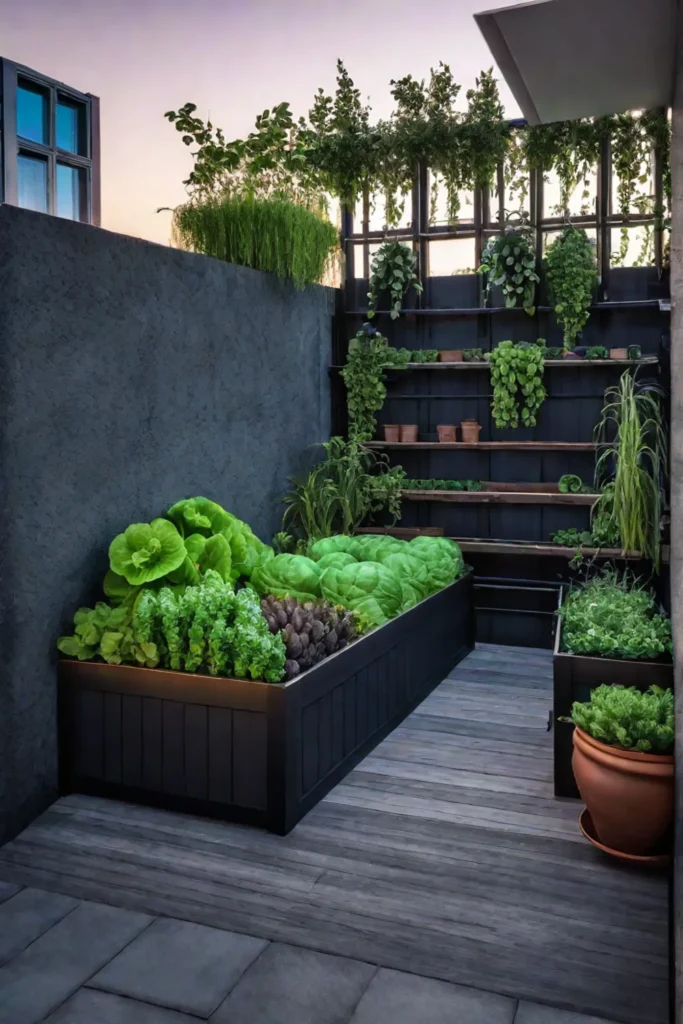
Proper watering techniques and conservation strategies will help you maintain a healthy, thriving vegetable garden while minimizing water usage.
Step 7: Maintenance and Pest Management
Keeping your vegetable garden well-maintained and protecting it from pests and diseases is essential for a successful growing season.
Basic Maintenance Tasks
Weeding
Regularly remove weeds to prevent them from competing with your vegetables for nutrients, water, and sunlight.
Mulching
Apply a layer of organic mulch, such as straw, leaves, or grass clippings, to help retain soil moisture, suppress weed growth, and add nutrients as the mulch decomposes.
Fertilizing
Feed your plants regularly with a balanced organic fertilizer or compost to provide the necessary nutrients for healthy growth and abundant harvests.
Common Pests and Diseases
Some common pests and diseases that may affect your vegetable garden include:
- Aphids: Small, soft-bodied insects that feed on plant sap, causing distorted foliage and reduced yields.
- Leafminers: Fly larvae that tunnel between the upper and lower leaf surfaces, leaving telltale frass trails.
- Whiteflies: Small, white flies cluster on the leaves’ undersides, excreting honeydew that attracts sooty mold.
- Tomato blight: A fungal disease that causes black lesions on tomato fruits and leaves, eventually leading to defoliation and plant death.
- Powdery mildew is a white, powdery substance on the surface of leaves caused by a fungus that affects many types of vegetables.

Organic and Chemical Solutions for Pest Management
To manage pests and diseases in your vegetable garden, consider the following approaches:
Organic Solutions:
- Biological controls: Introduce beneficial insects, such as ladybugs or praying mantises, to prey on pests.
- Botanical insecticides: Plant-derived products like neem oil or pyrethrin control various pests.
- Physical barriers: Employ row or floating row covers to exclude pests from reaching your plants.
Chemical Solutions:
- Insecticidal soap: A mild detergent solution that kills soft-bodied insects on contact.
- Neonicotinoids are systemic insecticides absorbed by plant roots and distributed throughout the plant. They are effective against many types of pests.
- Fungicides: Chemicals that control fungal diseases, such as powdery mildew and blight.
By adopting an integrated pest management (IPM) approach, you can maintain a healthy, productive vegetable garden while minimizing the use of harsh chemicals.
Step 8: Harvesting and Storage
The final step in your vegetable gardening journey is properly harvesting and storing your bounty to maximize its freshness and shelf life.
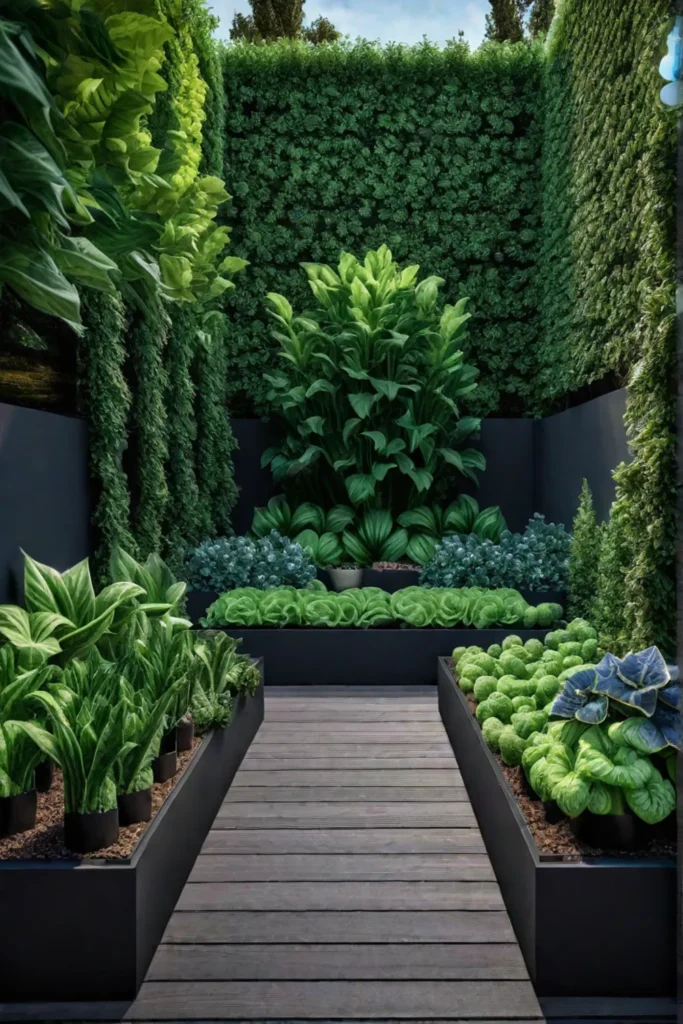
Signs of Ripeness for Various Vegetables
- Tomatoes: Ripe when they reach full color and are slightly soft to the touch.
- Peppers: Bell peppers are ready when they turn bright red, yellow, or orange, while hot peppers typically remain green but may change color.
- Cucumbers: Harvest before they become too large, ideally when they reach about 6 inches long for slicing varieties and 3-4 inches for pickling.
- Eggplant: Harvest when the skin turns glossy and purple-black, although this can vary by variety.
- Zucchini: Pick when the zucchini reaches about 6 inches long and is still tender.
Proper Harvesting Techniques
- Use sharp tools: Ensure your knives or pruning shears are sharp to avoid tearing or bruising the plants.
- Handle with care: Gently pick fruits and vegetables to prevent damage.
- Cut, don’t pull: Instead of pulling, use a knife or pruners to cut the produce from the plant.
- Avoid over-picking: Don’t remove more than necessary at once to prevent stressing the plant.

Storage Suggestions
To extend the life of your freshly harvested produce:
- Cool quickly: Chill fruits and vegetables as soon as possible after harvesting to slow down bacterial growth and preserve quality.
- Maintain proper temperature: Store most produce at 41°F (5°C) to maintain freshness.
- Regulate humidity: Provide a humid environment to prevent shriveling and dehydration.
- Use appropriate containers: Choose non-toxic, well-ventilated containers to store your harvest.
By following these harvesting and storage techniques, you can enjoy the delicious fruits of your labor for weeks to come.
Conclusion
Planning and cultivating a successful vegetable garden doesn’t have to be complicated. Following these eight essential steps, you can create a thriving oasis of homegrown produce in your backyard or patio.
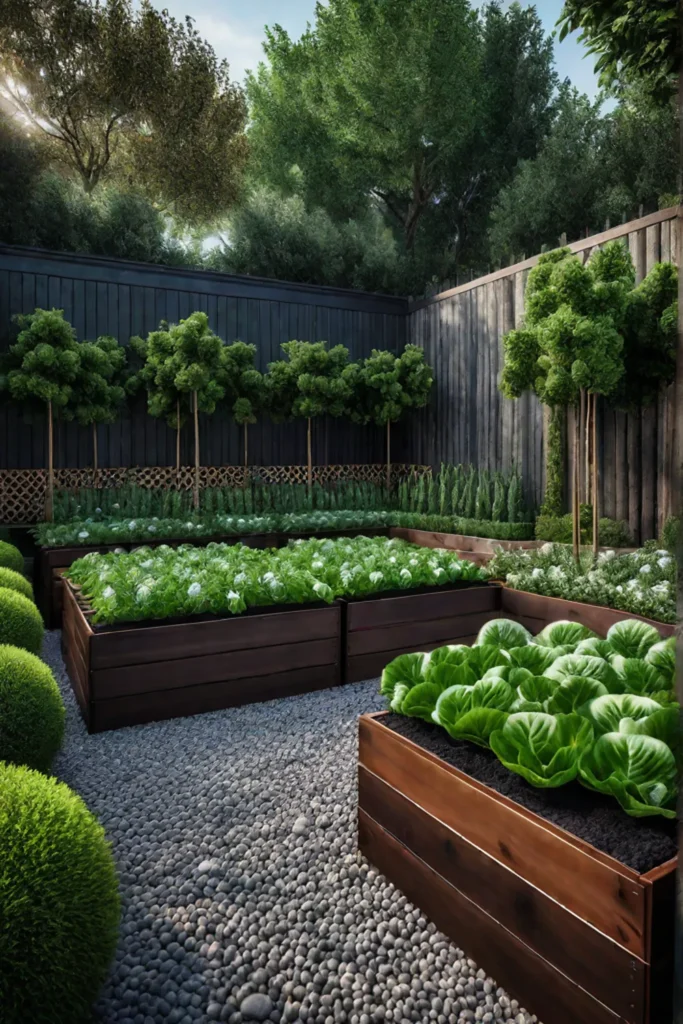
Remember to start small, focusing on a few beginner-friendly vegetables that suit your space and growing conditions. As your skills and confidence grow, you can gradually expand your garden. Don’t be afraid to try new techniques and learn from any challenges you encounter.
I encourage you to share your vegetable gardening experiences and tips in the comments below. I’m passionate about the joy of growing your own food, and I’d love to hear about your journey. Happy gardening!
